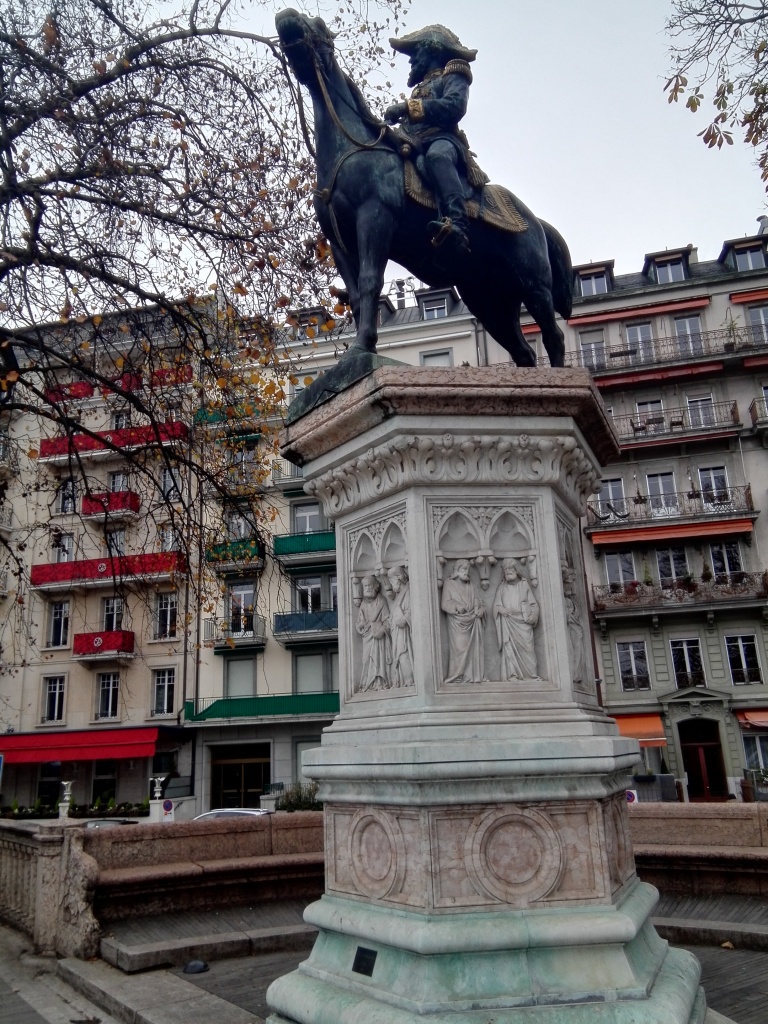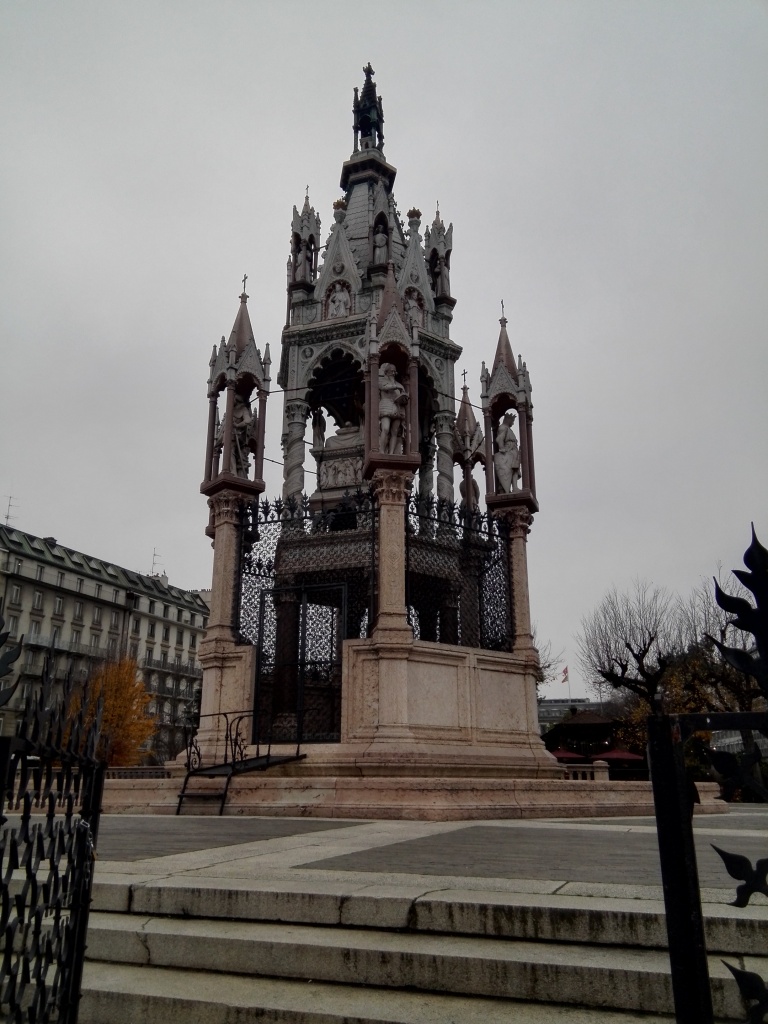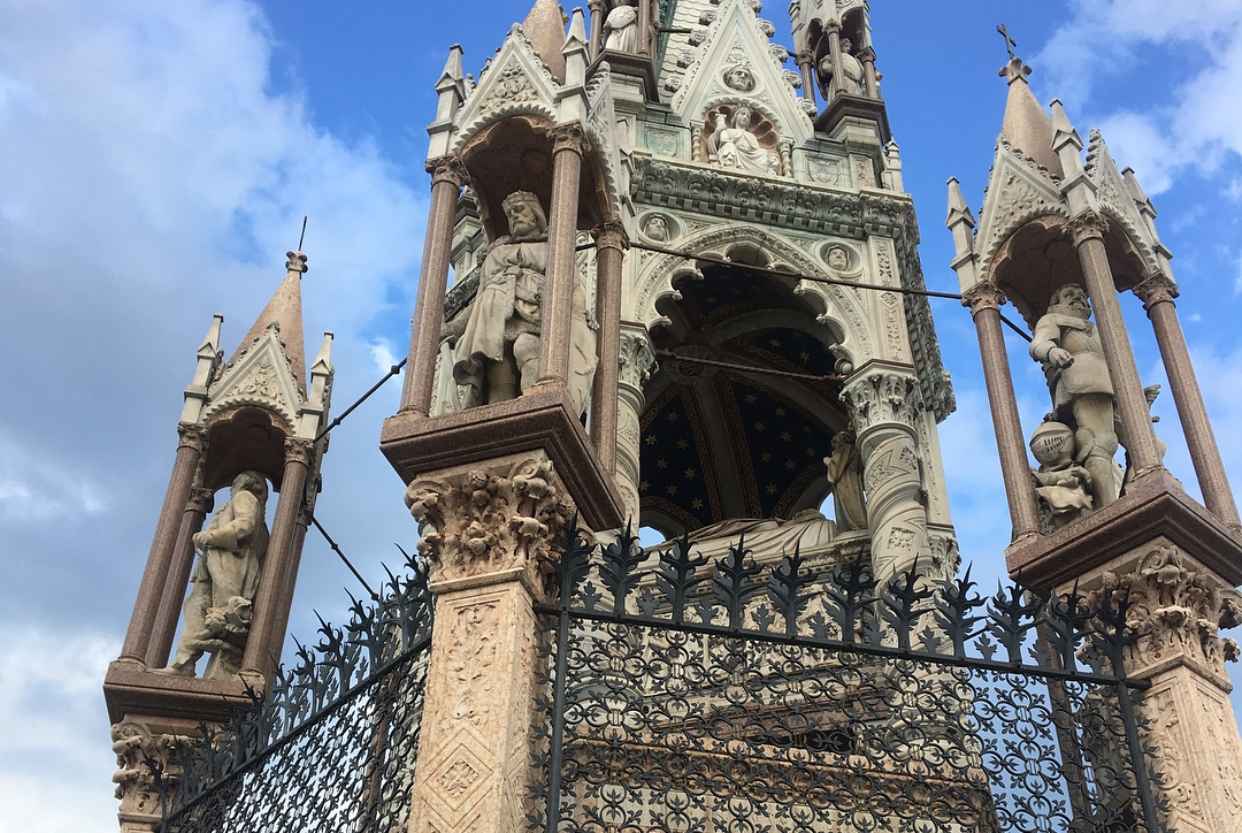Among the Geneva’s attractions, which include a 145-meter high fountain that is among the world's largest ones in the city lake, the mausoleum of Charles (Karl) II, Duke of Brunswick, the eldest son of the famous German commander, a participant in the war against Napoleon, occupies an honorable place.
The mausoleum is located in the city centre, on the embankment of Lake Geneva. And it is a Lutheran chapel richly decorated with figures of knights and noble maidens, in the centre of which a marble coffin with the ashes of the Duke lies on a high pedestal. To the right and to the left of it, there are two shallow pools guarded by winged stone griffins. Оn the edge of a granite platform surrounded by a fancy fence, there is a monument to Charles II. A carved, sculptural pedestal supports the equestrian sculpture of the Duke, in a Napoleonic cocked hat and in a general's uniform. The gate to the mausoleum is guarded by two giant long-maned lions.
By and large, Charles II, Duke of Brunswick, has no direct relation to Geneva. He was born in 1804 in the capital of the German Principality of Brunswick-Wolfenbüttel, located in Northern Saxony. And after the death of his father, he inherited the title of Duke of Brunswick. However, having assumed the reins of power over the inherited lands, he first quarreled with the Kingdom of Hanover, the then capital of Saxony, then with the German Union that accused him of corruption.
The Duke went to live in Paris, leaving the management of the lands to his younger brother William (Wilhelm). In the capital of France, Charles’s life was not boring. Surrounded by friends and girlfriends, he had fun and even became the ‘hero’ of one of the secular scandals when, during the performance of the opera ‘Norma’ by Italian composer Vincenzo Bellini, he and his friend, the French aristocrat Count Isouard, played chess against Paul Morphy, the famous American genius. The friends, who were sitting in the theatre box with their backs to the stage and the principal opera singers, lost a game, but it came down in the chess history as the Morphy’s ‘Opera game’ - a brilliant example of a sparkling combination of the grand chess master - Morphy played his sixteen moves and finished with a queen sacrifice.

After the Franco-Prussian War of 1870, Charles II, Duke of Brunswick, moved to Geneva, where he died three years later at the Beau Rivage Hotel and gave away his entire wealth - 20 million gold francs - to the city of Geneva, and in his last will and testament he insisted that he should be buried in the central square, on the shores of Lake Geneva. He had no wife, nor children. It was not clear what to do with such enormous wealth. And knowledgeable people say that, the city council members were confronted with the dilemma for a long time - what to do. On the one hand, it is awkward to commemorate the pleasure-seeker and troublemaker in the most distinctive place of Geneva, on the other hand, it is also absurd to refuse such an sum, and it was unknown - in whose favour.

Now, in 150 years, this mausoleum decorates the city and is its attraction alluring the tourists. It is almost as famous as the 145-meter Geneva fountain. And as for the life story of the cheerful Saxon aristocrat who gained notoriety - who recalls it?!


